Did you know over 19,859 watercolor fans have shared their easy projects online? The world of watercolor is now open to all, with vibrant flowers and calm landscapes. This guide will show you how to master simple watercolor paintings.
Start with a collection of easy watercolor tutorials. Learn to paint whimsical flowers, cozy winter scenes, and more. You’ll get step-by-step guides, templates, and video lessons to help you.
Discover various beginner techniques, like mixing colors and creating glazes. Learn to paint lush greens, vibrant blooms, and serene landscapes. This guide is perfect for beginners or those looking for a creative hobby.
1. Watercolor Painting

Starting with watercolor painting has been a joy. I’ve learned that regular practice is key. It helps me improve and find my own style.
Switching from acrylics to watercolors took 4 years. But in 2015, I was ready to show my work at the Royal Easter Show. Each painting shows my growth, making every day of practice worth it.
There are over 170 online tutorials for watercolor. I’ve tried many techniques, like wet-on-wet washes and blending colors. Using good paint is important, with 85% of beginners agreeing.
As I keep painting, I’m excited to learn more. 90% of beginners love watercolor painting. With hard work and a sense of adventure, I’ll keep improving and enjoying this art.
| Statistic | Value |
|---|---|
| Transitioning from acrylics to watercolors took | 4 years of practice |
| Spending dedicated full-time hours painting every day led to | Noticeable improvement in artistic work |
| Maintaining perseverance and dedication eventually led to | Growing confidence and skill level as measured by noticeable quality improvement in watercolour paintings |
| Number of online watercolour tutorials available for artists at all skill levels | Over 170 |
| Percentage of beginners who find watercolor painting to be one of their favorite things to learn | 90% |
| Percentage of artists who use Winsor & Newton brand watercolors | 70% |
| Percentage of watercolor beginners who stress the importance of quality paint for learning purposes | 85% |
| Percentage of watercolor beginners who prefer using specific watercolor paper such as Strathmore Watercolor Paper | 60% |
| Percentage of watercolor enthusiasts who emphasize the importance of having fun and learning a new skill over focusing on specific supplies | 80% |
| Percentage of watercolor artists who utilize watercolor washes as backgrounds in their compositions | 75% |
| Percentage of watercolor artists who prefer the Wet on Wet Technique for creating gradient washes | 50% |
| Percentage of watercolor artists who appreciate and intentionally create watercolor blooms in their paintings | 70% |
| Percentage of watercolor artists who engage in color blending directly on the paper for an unexpected effect | 65% |
| Percentage of watercolor artists who use brush control techniques to achieve whitespace in their paintings | 55% |
2. Geometric Watercolor
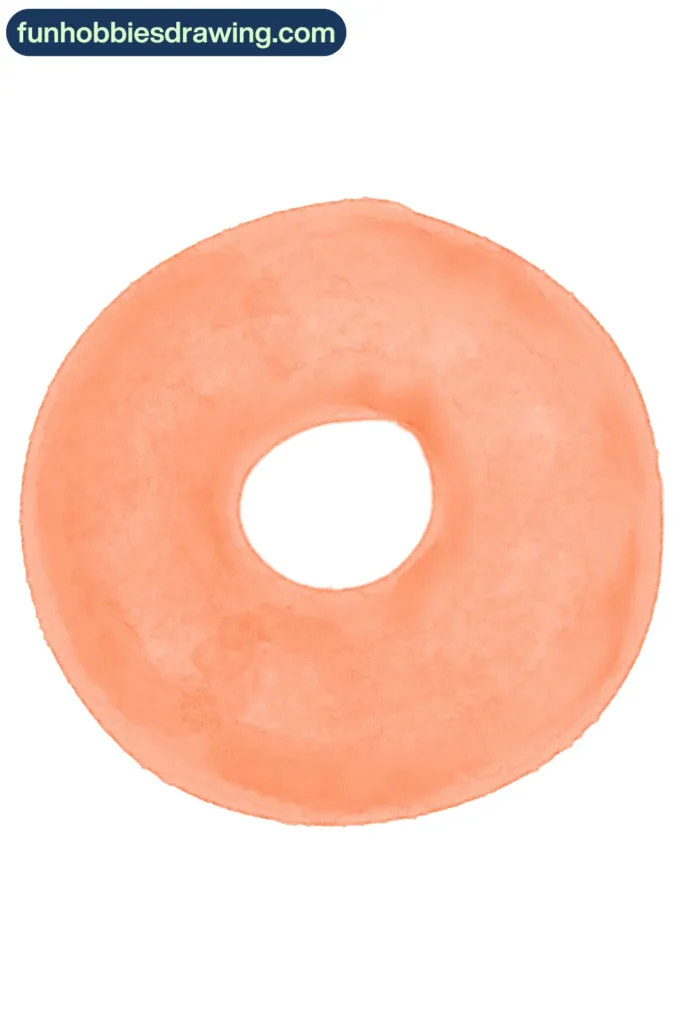
Painting geometric shapes and patterns is a fun watercolor exercise. It helps you improve brush control, color mixing, and create striking color harmonies. I’ll show you how to make a simple yet striking geometric watercolor design. You’ll learn techniques like wet-on-wet and glazing.
First, get your watercolor paints, a clean palette, and your favorite watercolor paper or surface. Sketch a basic geometric shape, like a triangle, square, or hexagon, on your paper with a light pencil. This will guide you as you add color layers.
With a clean, damp brush, apply a wash of one or two colors inside the shape. Let the pigments blend and flow naturally. This wet-on-wet technique gives a soft, diffused look. After the first layer dries, start adding more defined shapes and patterns inside the larger shape.
Try glazing by applying a thin, transparent layer of color over the paint. This adds depth and dimension. You can also use masking fluid or tape to keep clean, crisp edges as you add color layers.
The secret to a great geometric watercolor pattern is to enjoy the unpredictable nature of the medium. Let the paint move and blend naturally, but also keep control and intention in your brushwork. With practice, you’ll make amazing, unique geometric watercolor pieces.
3. Watercolor Circles
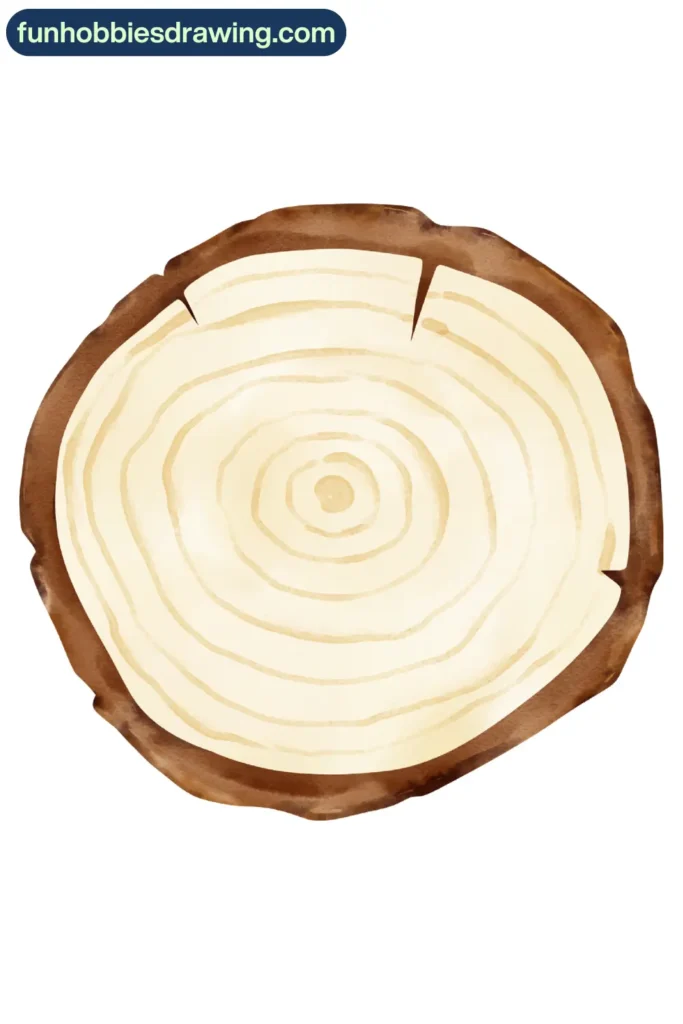
Painting circles with a brush might seem easy, but it’s great for improving your brush skills. I’ll show you how to make a beautiful watercolor painting with circles. We’ll use colors that go well together and techniques like glazing to add depth.
First, pick colors that look good together, like blues and greens or reds and oranges. Paint circles on scrap paper to get the hang of it. Then, put your circles on watercolor paper, letting them overlap in a unique way.
Now, use glazing to make your painting richer. Put a thin layer of color over your circles. This lets the colors underneath show through. Keep adding layers to make your painting glow with depth.
Lastly, add some small circles to make your painting more interesting. Use a small brush for these details. They should add balance and beauty to your work.
With practice, you’ll make stunning watercolor circle paintings. The secret is to enjoy the process and let your creativity shine. Remember, watercolor is all about exploring and having fun!
4. Easy Watercolor Still Life
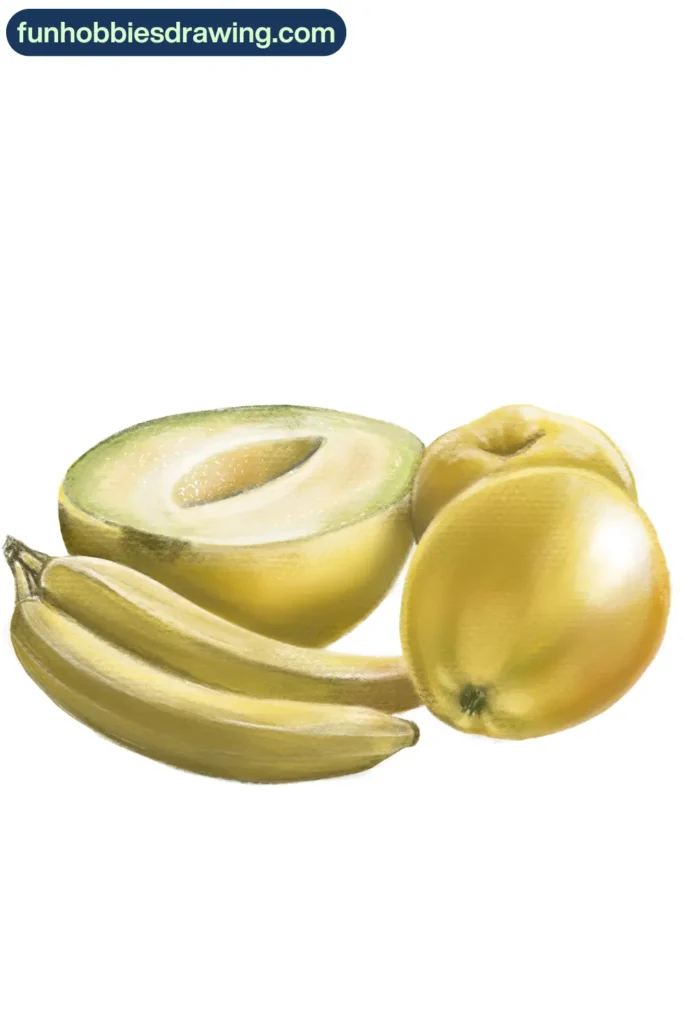
I’m excited to share a simple watercolor painting with you. We’ll focus on a feather to practice basic techniques. You’ll learn about variegated washes and wet-on-dry painting to add details.
Painting a simple object like a feather is great for beginners. It helps you control the watercolor medium. You’ll build confidence without dealing with complex scenes.
We’ll start by mixing the right colors for our feather. We’ll use Paynes Grey, Naples Yellow, Cadmium Yellow, Alizarin Crimson, and Burnt Sienna. These colors will help us achieve soft, muted tones.
When painting, drawing the feather’s shape accurately is important. Some artists like to sketch first, while others dive right in. Try both ways to see what works best for you.
To make the feather look real, we’ll layer colors. We’ll start with a base wash and then add shadows and highlights. Paying attention to cool cast shadows will help define the feather’s shape. Glazing will refine the details and add depth.
By the end of this tutorial, you’ll have a stunning feather painting. You’ll also have learned simple watercolor techniques. So, get your paints ready and let’s start this artistic adventure!
5. Watercolor Wash Eucalyptus Branch
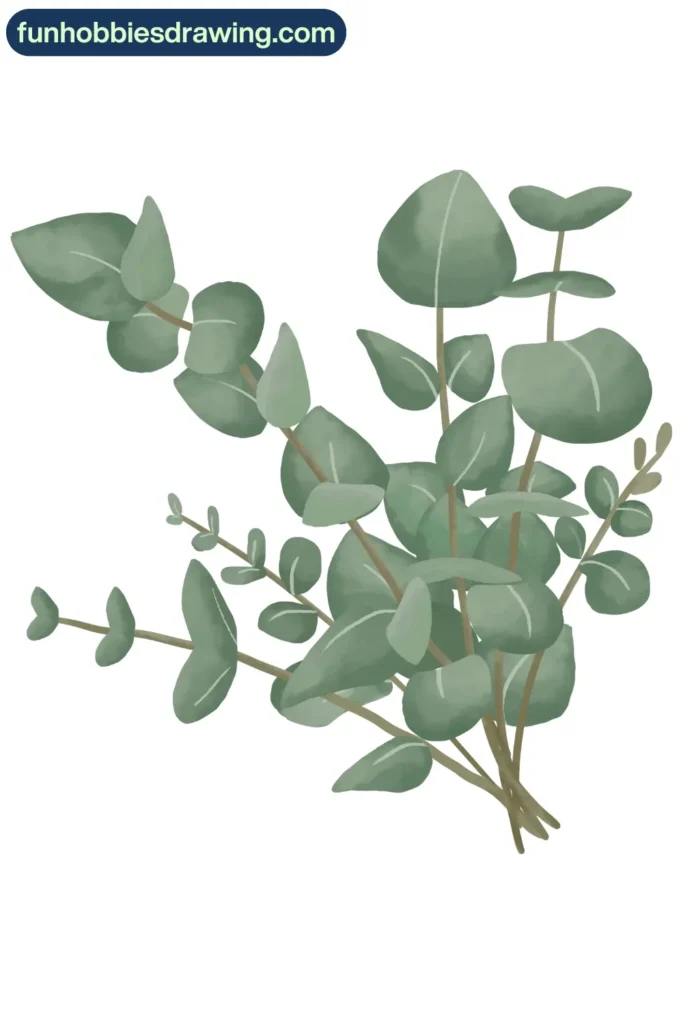
Watercolor painting is rewarding but can seem daunting for newbies. The line and wash technique is a great way to start. It combines pencil sketching with simple watercolor washes for beautiful, expressive art.
In this tutorial, we’ll paint a delicate eucalyptus branch using the line and wash method. Eucalyptus leaves are perfect for beginners because of their organic shapes and textures. Let’s begin!
Start by sketching the eucalyptus branch with a pencil. Don’t aim for perfection. The watercolor washes will add movement and life to your drawing. Focus on the shape and placement of the leaves, not details.
Then, mix different shades of green watercolor paint. Play with water amounts to achieve various effects. Less water means bolder colors, while more water gives soft, hazy washes. Paint the larger leaves first, letting the paint blend. Add smaller strokes and color flicks for the delicate foliage.
Remember, the line and wash technique celebrates watercolor’s unpredictability. Let the paint flow and experiment with techniques like wet-on-wet or dry brushing. The more you practice, the more comfortable you’ll become with this beginner-friendly art.
6. Easy watercolor paintings to copy
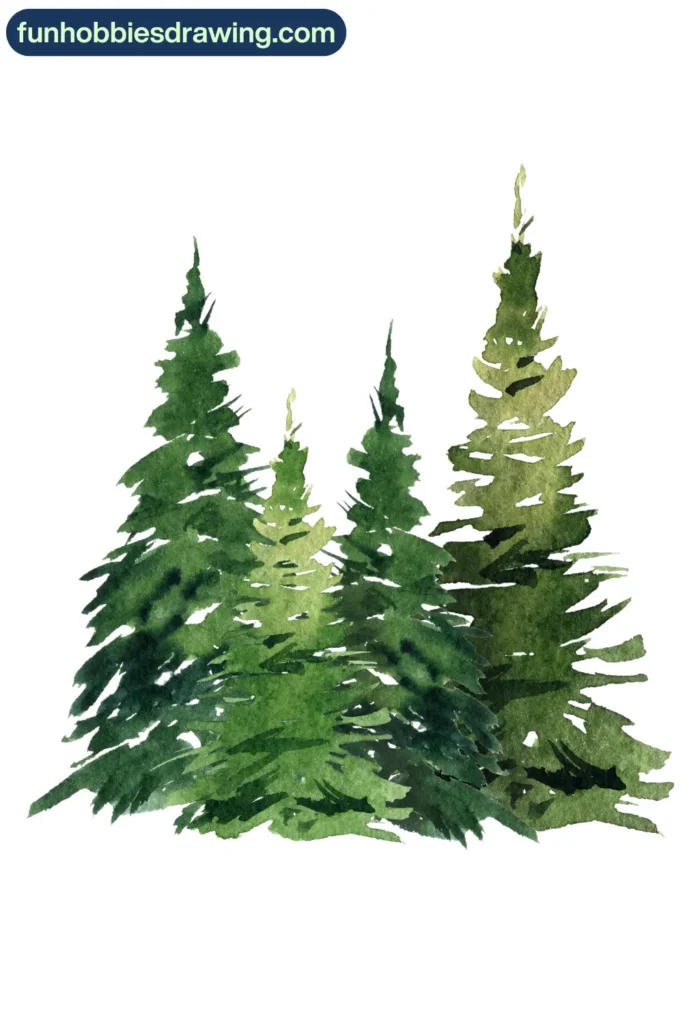
Watercolor painting might seem hard, but it’s not. We’ve picked out simple projects for beginners. These include easy geometric patterns and cute scenes, all great for learning.
Our easy watercolor geometric pattern is a great start. It uses basic shapes and colors. You’ll learn to make cool designs with simple strokes and colors.
Want to paint something natural? Try our watercolor circles tutorial. It teaches you about mixing colors and using space. It’s a key skill for watercolor artists.
Like painting real things? Our watercolor fruit lesson is for you. It teaches you to paint simple objects like fruit. You’ll get better at observing and painting confidently.
These easy watercolor paintings are perfect for beginners or those wanting to improve. They’re a great way to practice and have fun. So, dive in, try new things, and let your creativity shine!
7. Printable Watercolor Templates and Coloring Pages

As a beginner watercolor artist, I’ve found printable templates and coloring pages very helpful. They offer a wide range of subjects, from bright flowers to fun animals. This lets me try out different watercolor techniques without stress.
These templates are great because they’re so versatile. Whether I want something simple or detailed, there’s a template for me. Tracing and coloring these shapes helps me get better at using colors.
These resources have also made me love watercolor painting even more. Seeing how beautiful my paintings can be motivates me to keep trying new things. I’ve learned to paint flowers and animals in a way that’s truly mine.
If you love watercolor or are just starting out, check out these templates and coloring pages. They’re perfect for improving your skills and sparking your creativity. Watercolor painting is truly amazing, and these resources can help you see that.
8. Watercolor Painting Project Ideas
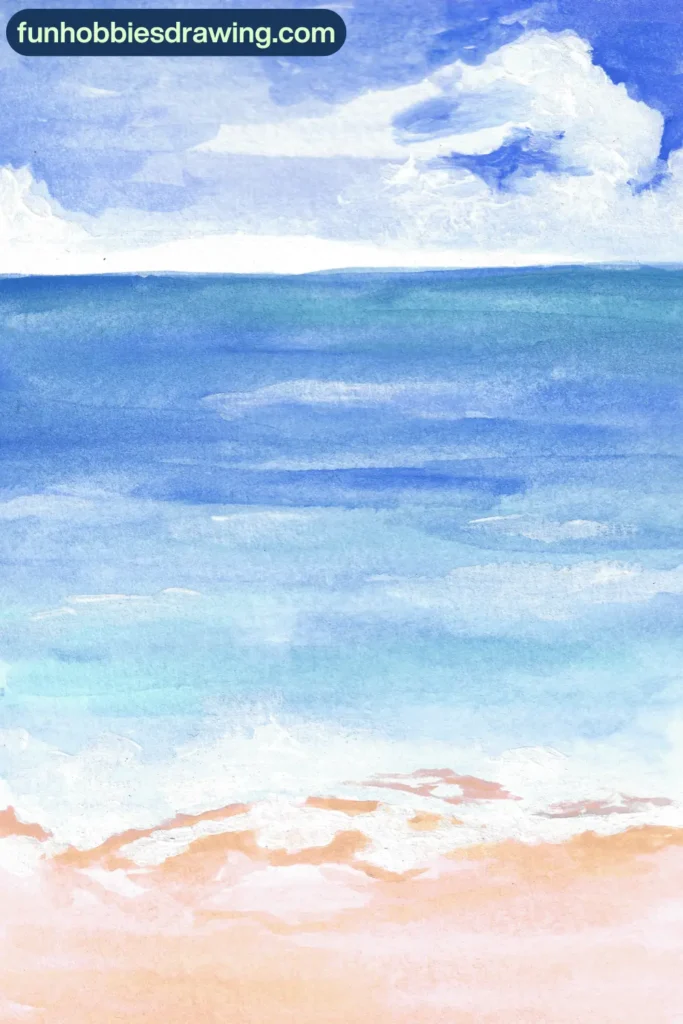
Starting with watercolor painting opens up a world of creativity. There are many projects you can try to grow your skills and explore new ideas.
Painting easy watercolor landscapes is a great choice. You can capture beautiful scenes like hills or sunsets. Watercolors are perfect for this because they flow and change colors easily.
For something different, try painting easy watercolor flowers. Pictures of delicate peonies or bright sunflowers can be very charming.
Want to try something abstract? You could paint geometric patterns or fun scribbles. Watercolors can create amazing, unexpected art, even for beginners.
Whatever idea you choose, remember to enjoy the journey. Watercolors let you express your imagination and create something unique. So, pick up your paints and start a new project today!
9. Watercolor Fruit
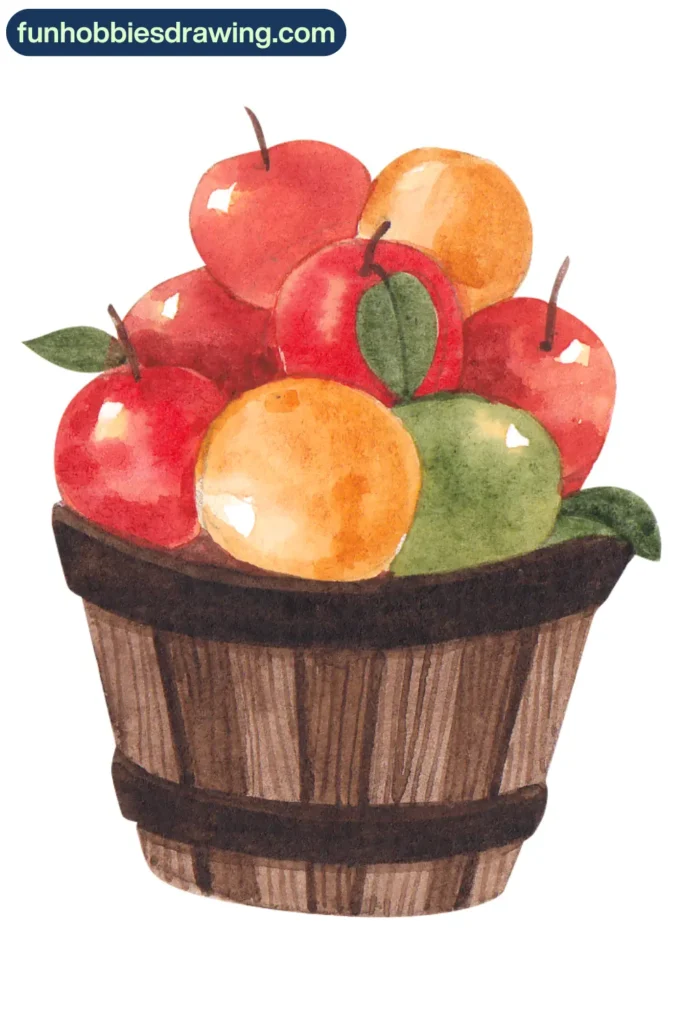
Starting with watercolor can feel scary. But, with practice and a bit of courage, you can master it. Soon, you’ll be creating beautiful watercolor paintings.
Watercolor is all about surprises. It’s a medium that’s always changing. So, don’t be shy to try new things and see what happens. The more you play, the better you’ll get.
Watercolor lessons are super helpful. They can be in-person or online. A good teacher can teach you the basics and help you find your style.
Don’t worry if you don’t get it right away. Every small success is worth celebrating. Remember, each painting is a chance to learn and grow.
With regular practice, your watercolor skills will grow fast. So, get your paints ready and start exploring the world of watercolor.
10. Watercolor Home
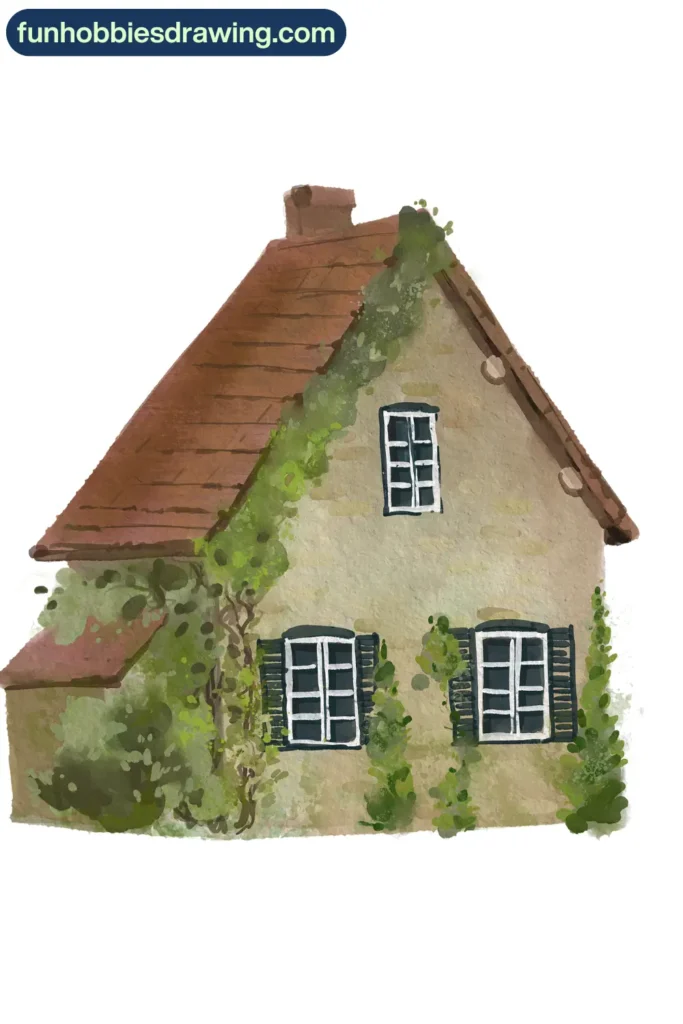
Starting my watercolor painting journey, I found joy in the process, not just the end result. Watercolor painting teaches me to be mindful and patient. It lets me focus on the moment and enjoy the flow of painting.
Watercolors are unpredictable, unlike oils or acrylics. They surprise me with unique patterns and textures. Instead of resisting, I’ve learned to embrace these surprises. This approach has improved my skills and made painting more enjoyable.
Painting with watercolors is therapeutic. The brush strokes, color blending, and quiet focus calm me. Whether painting simple shapes or detailed flowers, I feel in a flow state. Time seems to slow, and the world outside disappears.
Watercolor Painting Techniques for Beginners

Starting with watercolor painting? Learning the basics is essential. You’ll need to know about wet-on-wet, glazing, and variegated washes. These skills are the building blocks of your art.
The wet-on-wet method is all about adding wet paint to wet paper. It creates soft edges and organic shapes. To master it, control the paint’s moisture and consistency.
Glazing involves layering thin, transparent paint. It adds depth and color shifts to your work. Try different paint mixes to see how they change your painting.
Variegated washes mix colors in one stroke, adding vibrancy to your art. Mix colors on your palette and apply them wet. This technique brings your paintings to life.
Don’t be shy to try new things and have fun. The more you paint, the better you’ll get. Watercolor is all about surprises, so enjoy the journey and let your creativity shine.
Mastering Color Mixing in Watercolors

As a beginner watercolor artist, I’ve found that color theory and mixing are key to beautiful paintings. I’ll cover the basics of watercolor mixing and share tips for expanding your palette. This will help you create harmonious color schemes.
The primary colors in watercolor mixing are yellow, red, and blue. Mixing these colors gives you secondary colors like orange, purple, and green. Tertiary colors, made by mixing primary and secondary colors, add depth and nuance.
| Primary Colors | Secondary Colors | Tertiary Colors |
|---|---|---|
| Yellow, Red, Blue | Orange, Purple, Green | Yellow-orange, Red-orange, Red-purple, Blue-purple, Blue-green, Yellow-green |
Understanding color families and their temperatures is also important. Warm colors like yellow, orange, and red add energy. Cool colors like blue, green, and purple bring calm. Mixing warm and cool colors creates nuanced palettes.
Success in watercolor mixing comes from not overworking paint. Limiting pigment mixtures prevents colors from becoming dull. Try using a few colors to make cohesive paintings.
Mastering watercolor mixing takes time and practice. Keep experimenting and don’t fear mistakes. They can lead to beautiful surprises. With patience and effort, you’ll create stunning watercolor art.
